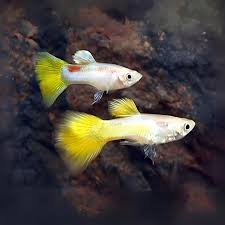How To Care For Yellow Guppy
The Yellow Guppy is a delightful freshwater fish known for its bright yellow coloration, which adds a cheerful pop of color to any aquarium. These small, lively fish are popular among aquarists due to their vibrant appearance and easy-going nature. With their playful behavior, Yellow Guppies thrive in community tanks, often showcasing their vibrant hues in schools.
Caring for Yellow Guppies requires a spacious and well-maintained aquarium. They prefer stable water conditions, so regular water changes are essential to maintain cleanliness and a healthy environment. Providing plenty of swimming space and adding plants or decorations will create a stimulating habitat for these active fish, allowing them to explore and interact with their surroundings.
Yellow Guppies are omnivorous and benefit from a varied diet. A high-quality staple diet of flakes or pellets, supplemented with occasional treats like live or frozen foods such as daphnia or brine shrimp, helps keep them healthy and enhances their vibrant coloration.
With proper care, Yellow Guppies can live for several years, making them a joyful addition to any freshwater aquarium. Their bright colors and energetic behavior bring life to community tanks, making them a favorite choice for both novice and experienced fish enthusiasts.
Yellow Guppy is a fascinating aquarium fish that stands out with its vibrant colors. It belongs to the family Poeciliidae and is native to the Freshwater.
This species has a care level of Easy and requires a minimum tank size of 10 gallons (38 liters). It typically reaches a size of 2.5 inches (6.4 cm).
Preferred water parameters include a specific gravity (sg) of 1.000 - 1.005, pH ranging from 6.5 - 8.0, and a temperature between 72-82°F (22-28°C). Additionally, maintaining water hardness within the range of 10-20 dGH is essential.
For stocking, the recommended ratio is 1:2-3 M:F. The Yellow Guppy is widely available and has a diverse diet that includes Omnivorous; enjoys a varied diet of high-quality flakes, pellets, and live or frozen foods.
With a life span of 2-3 years, this species is known for its very easy care requirements. It is an ideal choice for both beginner and experienced aquarists. Providing a well-maintained tank environment with suitable water conditions will ensure the health and vibrancy of this captivating species.

